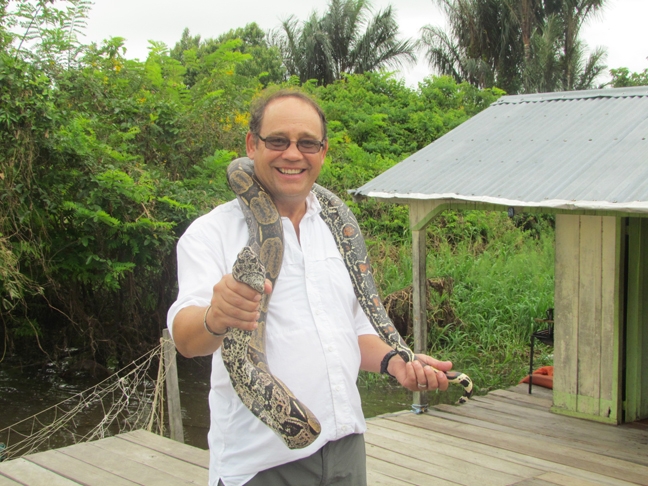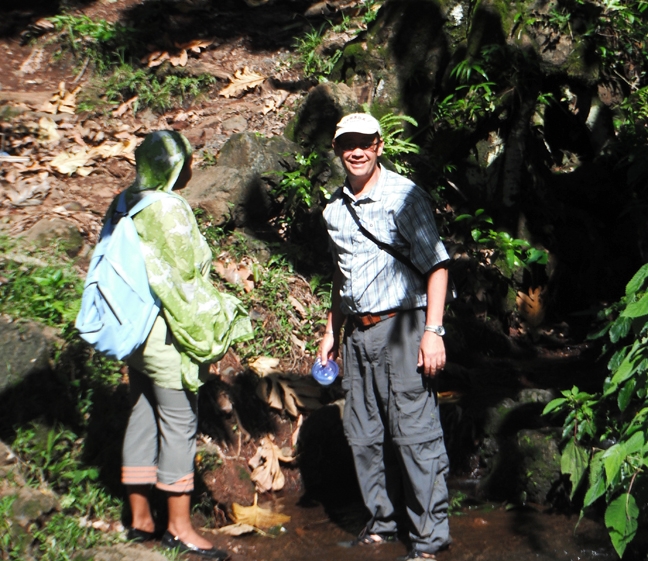- Author: Kathy Keatley Garvey
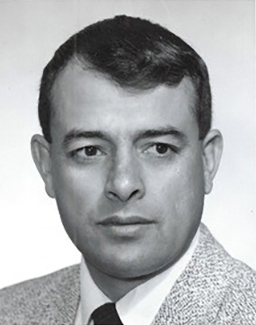
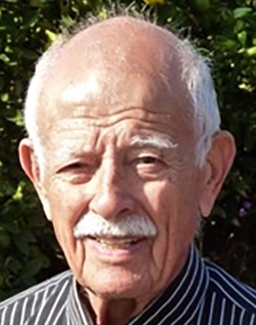
Robert Washino, emeritus professor of entomology, emeritus chair of the UC Davis Department of Entomology, and emeritus associate dean of the UC Davis College of Agricultural and Environmental Sciences, praised him for his research and friendship.
"I first met Mir who was on the UC Riverside campus in the early 1960s for the first organizational meeting of the UC Systemwide Mosquito Research Program with biologists representing UC Berkeley, UC Davis, UCLA and UC Riverside," Washino recalled. "From that day forward, all of us in mosquito research competed for research funding and became either friends and/or competitors and sometimes both. I could have written a book on all that took place and it would have been a best seller if it were ever published but it was fun while it lasted!"
That was when the names of Barr, Work, Shaefer, Garcia, Reeves, Belkin, Bohart, Mulla and Washino--and more--populated the mosquito research news, or names "from the good ol days," said Washino, now 91.
"Mir was a great help to me getting started at UC Riverside, particularly in my mosquito days," said UC Davis distinguished professor Bruce Hammock, who holds a joint appointment with the Department of Entomology and Nematology and the UC Davis Comprehensive Cancer Center.
Major Dhillon, retired district manager of the Northwest Mosquito Abatement District, headquartered in Corona, Riverside County, and executive director emeritus of Society for Vector Ecology (SOVE), based in Ontario, Calif., was a 49-year friend and colleague.
"He was my major professor under whom I got my doctorate," Dhillon said. "I met him when he was 49 years old and I lost him after 49 years. He was a great mentor and TRULY an exemplary scientist of international fame.”
Dhillon said that Mulla donated $50,000 to SOVE last year at a memorial lecture. Mulla is credited with helping establish the UC Riverside's medical entomology department. He was named a fellow of the Entomological Society of America in 1995 and a Fellow of the American Association for the Advancement of Science in 1998. The World Health Organization honored him with its Distinguished Service Award in 2010, and SOVE singled him out for a Lifetime Achievement Award in 2009.
Mulla's Formula. Mulla was a close associate of William "Bill" Reisen, professor emeritus, Department of Pathology, Microbiology and Immunology, UC Davis School of Veterinary Medicine. Reisen wrote about Mulla's Formula to Estimate Control in a book, Vector Biology, Ecology and Control, pages 127-137, published in 2010:
"In California, the endemic mosquito borne encephalitides, including West Nile virus, are contained by special districts using integrated vector management programs. These agencies combine public education, source reduction and proactive larval control to suppress mosquito abundance to the point where tangential transmission of virus to humans is rare or unlikely. However, when these methods in concert fail to prevent enzootic amplification and the risk of human infection becomes eminent or is on-going, emergency adulticide applications of pyrethrin compounds are used to interrupt transmission. The efficacy of these applications has become controversial and some cities have opted to not apply adul-ticides. The current paper describes how a formula developed Dr. Mir Mulla some 40 years ago is still useful in solving contemporary problems of estimating percent control, a statistic useful in evaluating intervention efficacy. This simple but effective equation accounts for changes in both control and treated populations and thereby can be applied in dynamic situations where abundance is not stable. Examples are presented from ground and aerial experimental applications in Riverside County and from emergency interventions in Sacramento County in 2005 and Yolo County in 2006."
According to a 2008 UC Riverside newsletter, Mir served as a major professor for 27 doctoral students and three master's students; mentored more than 30 visiting scientists from overseas; and trained 20 postdoctoral scientists. "Dr. Mulla has made noteworthy contributions to, and has served in, numerous national and international organizations. These include the World Health Organization, with over 40 years of service in capacities such as science advisor, member of the Expert Advisory Panel, member or chair of steering committees or scientific working groups, as well as temporary advisor on numerous international projects. His publications (over 400) are well known around the world and are sought after by many scientists and specialists."
Native of Afghanistan. Born in Zangawat, Afghanistan to a family of 12 brothers and 4 sisters, Mir received a scholarship in 1948 to Cornell University where he obtained his undergraduate degree in entomology and parasitology in 3.5 years. He received his doctorate at UC Berkeley. In 1956, joined the UC Riverside faculty to help establish a medical entomology department, and launched his research on the control of eye gnats and mosquitoes.
From the Riverside Press-Enterprise obituary: "In his 50-year career as a medical entomologist, Dr. Mulla pioneered insect control methods throughout Southern California and the world. Mir's techniques for eye gnat and mosquito control improved people's health worldwide. He was a prolific scientist who authored more than 500 scientific publications. He loved field work and was a demanding editor, guiding over 30 graduate students. Mir led World Health Organization efforts to help developing countries control vector-borne diseases, including malaria. He traveled to many countries in this endeavor."
His wife of 64 years, Leila "Lee" Patterson Mulla, died Aug. 9, 2019 at age 88. They met at the International House at UC Berkeley during his graduate studies and married in August 1954. They raised four children, David, Shireen, Dean and Janet.
"Mir served as a leader in the Riverside Muslim community," according to the obituary. "He and Lelia founded the Islamic Society of Riverside and Orange Counties and played a key role in building the Islamic Center of Riverside, the first mosque in the Inland Empire. His philanthropic work included supporting the local Muslim community, donating land to Riverside County Parks to preserve public access to Sugarloaf Mountain for generations and establishing scholarships with the University of California Riverside in the College of Agriculture and Natural Sciences."
A Muslim funeral prayer (Janazah) will be held Friday, Feb. 3 after the 1 p.m. Jum'a prayer at Islamic Center of Riverside, 1038 W Linden St., Riverside. A public memorial service will be held Saturday, Feb. 4 at 11 a.m. at the Norco Family Funeral Home, 2645 Hammer Ave, Norco, followed by burial at 1:20 p.m. Saturday at Pierce Brothers Crestlawn Mortuary, 11500 Arlington Ave, Riverside.
Donations in his memory can be made to the Dr. Mir S. Mulla and Lelia L. Mulla Endowed Scholarship Fund, UC Riverside Foundation (access https://myadv.ucr.edu/ and search for "Mulla") or the Islamic Center of Riverside, https://www.islamiccenterofriverside.net/donate).
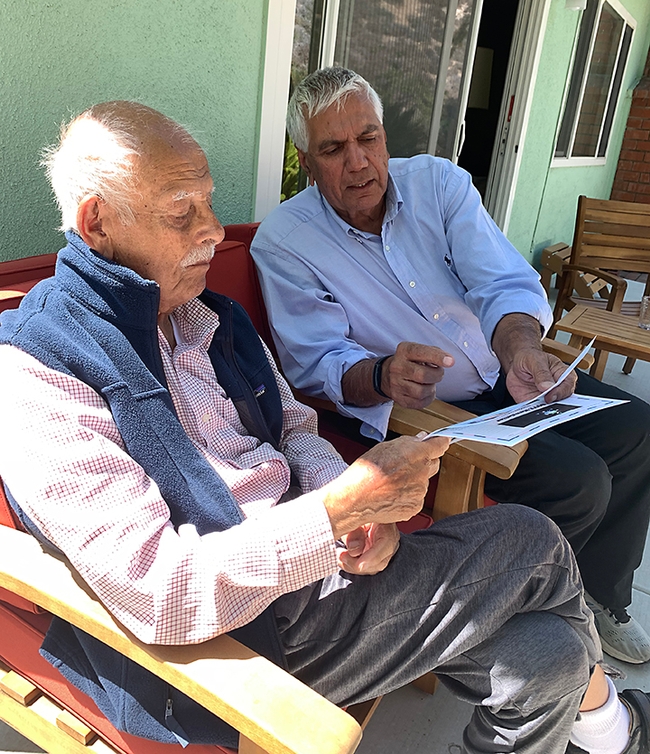
- Author: Kathy Keatley Garvey
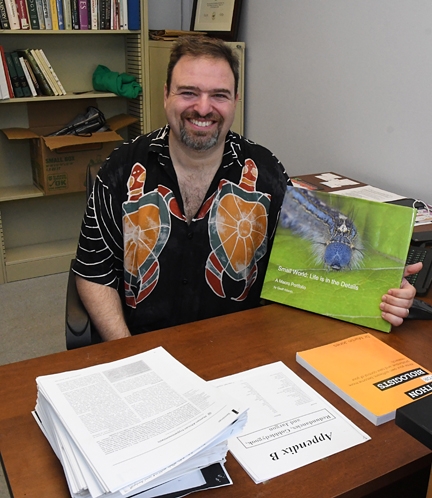
Attardo joined the department July 1 as an assistant professor after 13 years at the Yale University School of Public Health, New Haven, Conn., first as a postdoctoral fellow from 2004 to 2008, and then as associate research scientist and research scientist.
He now shares quarters in 37 Briggs Hall with Elina Lastro Niño, Extension apiculturist. Books on genes, genetics, genetic analysis, chemistry, biology and entomology line his book shelves, and macro images of insects and spiders brighten his walls. His coffee-table book, “Small World: Life Is in the Detail” showcases his passion for macro photography, particularly jumping spiders, dragonflies and praying mantids.
Geoffrey Attardo is eager to begin work. His research interests include the physiology and molecular biology of disease vectors, reproduction, nutrition, symbiosis, genetics, metabolomics, gene regulation, vector/parasite interactions “and any place the data leads me!”
“My lab will focus on aspects of the physiology of tsetse fly reproduction,” Attardo said. “The goal of this research is to identify and understand key aspects of tsetse's reproductive biology.” Tsetse flies, prevalent in much of sub-Saharan Africa, are known for vectoring human African trypanosomiasis, also known as sleeping sickness.
A native of Poughkeepsie, N.Y., Geoffrey received his bachelor's degree in entomology from the University of Massachusetts, Amherst, in 1994 and his doctorate in genetics from Michigan State University, East Lansing, in 2004.
A career in science came naturally. “My parents are both somewhat scientifically inclined, so I may have taken after them,” he says. “My father has a doctorate in metallurgy from Columbia University and led a long successful career at IBM. My mom was a full-time mom, but has a background in microbiology with a master's degree from Yale.”
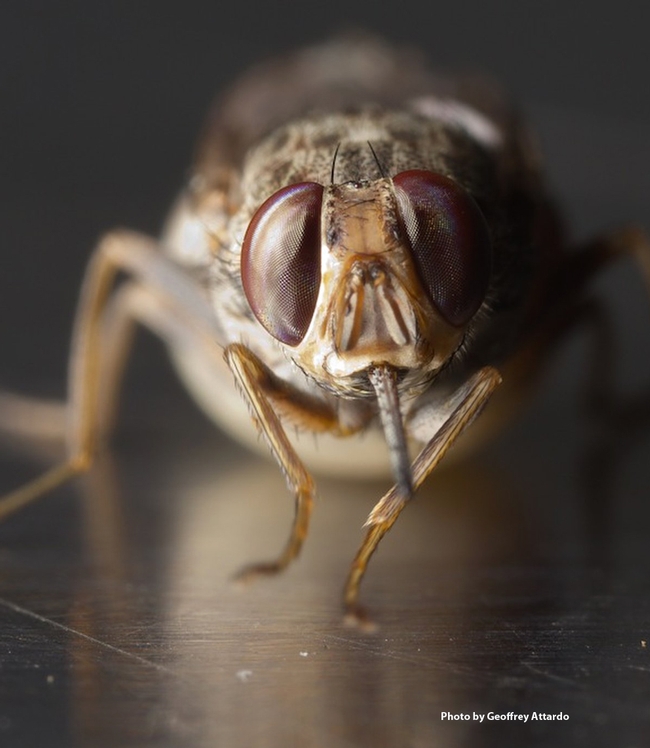
“I decided to develop my career in science and went to work in Dr. Alexander Raikhel's lab at Michigan State University as a graduate student. I was always drawn to understanding the molecular mechanisms underlying the extreme biology of insects and Dr. Raikhel's lab provided that opportunity. There I focused on the molecular biology of egg development in mosquitoes.”
In research on mosquitoes, Attardo demonstrated that mosquitoes require nutritional cues to begin egg development. “Egg development had been known to be regulated by a steroid hormone called 20-hydroxyecdysone,” Attardo explained. “However, treatment of mosquitoes with this hormone along did not activate egg development. My research showed that when female mosquitoes take blood, the protein in the blood is broken down into amino acids which in combination with the hormone activate egg development. Either amino acids or the hormone along were not capable of activating this process, but when they are combined it unlocks a massive physiological change which causes the production of yolk proteins and activation of egg development.”
After receiving his doctorate, Attardo joined the Yale lab of Serap Aksoy to work on tsetse flies. “In terms of fascinating physiological adaptations, the tsetse fly is one of the champions of the insect world!” Attardo says. “In addition to being vectors of a deadly disease, Trypanosomiasis, these flies have undergone amazing alterations to their physiology relative to other insects. Some examples of this are their ability feed exclusively on blood, their obligate relationship with a bacterial symbiont, the fact that they lactate and that they give birth to fully developed larval offspring. The opportunity to study the adaptations these flies have made is like opening a toy chest for an insect physiologist. My work in tsetse has focused on the molecular biology underlying the adaptations associated with the development of lactation, symbiosis, male and female mating interactions/physiology and nutrient metabolism and mobilization.”
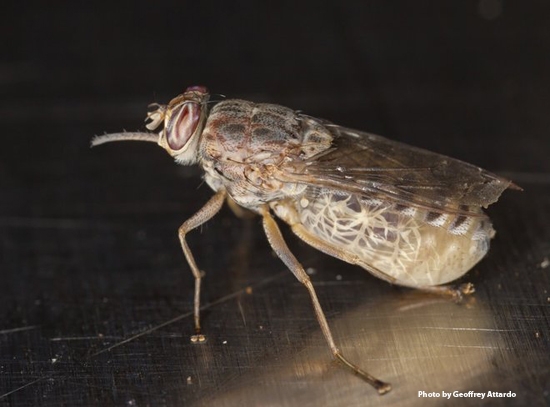
His tsetse research also includes identifying the tsetse milk proteins and the genes that code for them. Said Attardo: “They are really interesting as they are functionally very similar to milk proteins in mammals!”
In newly published research (June) in the Proceedings of the Royal Society B, he and his colleagues examined the relationship between the fly and its obligate symbiotic bacteria called Wigglesworthia. “Tsetse flies without their symbionts are unable to reproduce and abort their larvae before the complete development,” he says. “We showed that the bacteria supplements the flies diet with B vitamins and that the fly appears to scavenge nucleotides (the component molecules of DNA and RNA) made by the bacteria. The B-vitamins made by the bacteria enable the fly to metabolize nucleotides, sugars, amino acids and produce chemicals essential for its overall metabolism.”
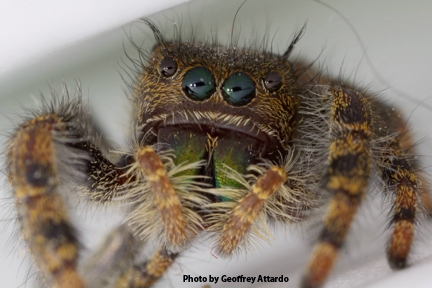
Attardo traces his interest in insects and macro photography to his childhood. “I had always been fascinated with insects, but my earliest memory was feeding insects to a beautiful black and yellow garden spider (Argiope aurantia) that had set up her web in front of the bay window of our house. I was especially interested in spiders. Another early memory was being sick in bed with the croup and reading--and rereading multiple times--through a picture book I had on spiders that had amazing macro photos. I found jumping spiders particularly fascinating. From that point on I had been fascinated with seeing insects up close, but it was not until I was able to afford a good digital camera and the appropriate lenses that I was able to get into insect photography.”
Attardo's first professional camera was a Canon that he received in the mid-1990s.
His first digital? A Canon Rebel XT. He now uses a Canon EOS 5D Mark IV with macro lenses, the MPE-65mm and the 100mm.
“I love macro photography because it reveals the amazing details that are present in things that many people take for granted or for mundane,” Attardo says. “Insects especially benefit from macro treatment as I find that most people have no idea about the type of amazing creatures they have living in their yard or even in their house. I'm often asked if my photos were taken in South America, Africa or Asia as the insects appear to be so exotic, however, they are often surprised --and sometimes dismayed--to find out that most of my photos are taken locally.”
The many shapes, sizes and designs of insects fascinate him. “I am a bit of a science fiction geek and I find insects to be almost alien in how different they are from vertebrates. It is like traveling to another planet when you start to magnify the world. I am endlessly fascinated with all the different strategies and adaptations they have developed to survive/thrive in places where many animals couldn't. I think by taking photos of them it allows me to open a window and share my fascination with people who don't normally give much consideration to insects and treat them just as bugs or an annoyance.”
“As a scientist, I have taken my fascination with the magnifying things to the extreme in that my work tends to focus on the molecular biology underlying the physiology of insect adaptations. The molecular adaptations are just as amazing as the morphological ones. However, they are even harder to visualize and explain to lay people. I enjoy illustration and artwork as well, so when it is not possible to take a picture of something I am working on, I try to create a visual representation of it.”
“I also really enjoy digital illustration and have recently gotten into 3D modeling. My first model is a tsetse fly for which I was able to use my macro photos to texture. See (https://sketchfab.com/models/263750e5a9c54c56a77d63ac06f2f317
He and his wife, Meg Gurley and their son, Douglas, 13, are settling into their home in Davis. "Meg is a full-time mom currently," he says, "and a Master Gardener. We have a symbiotic relationship as she grows the plants that attract the insects I like to photograph. Douglas and I are both into computers and computer gaming together."
Future lab plans? Attardo said three undergraduates will join his lab in the fall, helping him to “get the lab set up and running.” He hopes to hire a lab manager, a postdoc and “a couple of graduate students.”
A few of the projects he is excited to pursue:
- Study of lipid metabolism during tsetse pregnancy and the role that symbiotic bacteria play in this process.
- Understanding the molecular mechanisms that regulate the expression of genes coding for milk proteins during the lactation cycle.
- Understanding the physiology behind mating effects on female tsetse flies and the role of male seminal secretions on female fertility.
- Comparative genomic analysis of different tsetse species to identify factors associated with vectorial capacity.
- Understanding the nutritional and metabolic impact of trypanosome infection on female tsetse flies and their reproduction.
- Development of new non-invasive detection techniques to measure changing physiological states and determine trypanosome infection in flies using hyperspectral imaging.
Geoffrey Attardo invites “anyone who is interested in meeting me and talking science, photography or anything else to stop by the lab and visit! My door is always open--unless I have a grant due!”
He can be reached at gmattardo@ucdavis.edu.
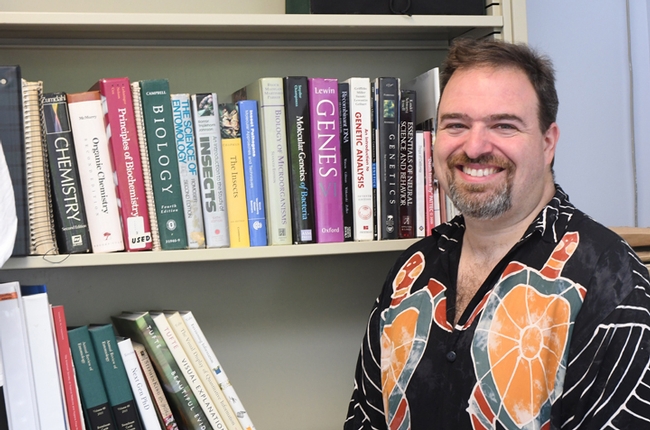
- Author: Kathy Keatley Garvey
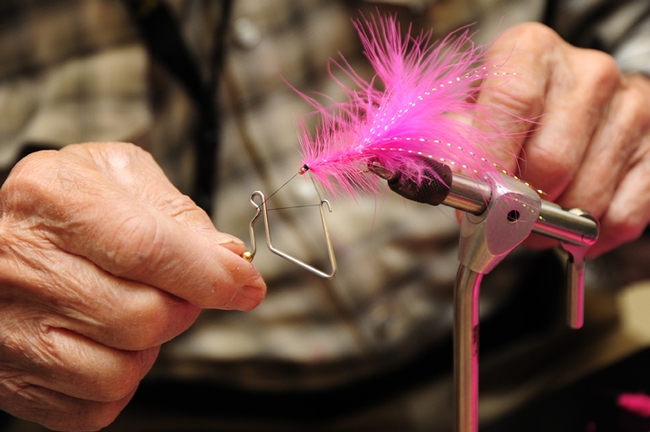
They are:
- "Little Swimmers and Fly Tying,” Briggs Hall, nominated in the category, "Hidden Treasures"
- “Medical Entomology,” Briggs Hall, listed in the category, "Academic Exhibits" and
- "Real Insects and Mimics,"Bohart Museum of Entomology, listed as a "Family Friendly" Exhibit.
During the morning of Picnic Day, the Picnic Day Exhibits Team will distribute a Zero-Waste table tent to the location. A table tent is simply a small, foldable sign (only 8.5"x5.5") created by the Environmental Stewardship and Sustainability Department to recognize your Exhibit's commitment to sustainability.
"Little Swimmers and Fly Tying" includes an aquatic display by the Sharon Lawler lab and fly-tying by the Fly Fishers of Davis. "Medical Entomology" features the "Dr. Death" booth by forensic entomologist Robert Kimsey; and mosquito exhibits by the Shirley Luckhart lab and the Sacramento-Yolo Mosquito Control District. The "Real Insects and Mimics" display will focus on flies mimicking bees.
An online voting poll, available from 8 a.m. to 10 p.m. on Saturday, April 16 only, will determine the winners. Visitors may vote at https://orgsync.com/51524/forms/194037
Winning exhibits will be featured on social media pages such as the Picnic Day website, Facebook, Twitter, Instagram, and Snapchat accounts after Picnic Day. They also will be featured next year, in preparation for Picnic Day 2017.
Last year Picnic Day judges selected the entomology booth, "Bug Doctor (Doctor Is In)" with "the most community-oriented award" in keeping with the theme "Heart of the Community." Michael Parrella, then professor and chair of the department, and graduate student Ralph Washington Jr. of the Steve Nadler and Brian Johnson labs, staffed the booth, showing various insects to the crowd and answering their questions.
This year's theme is “Cultivating our Authenticity.” The Briggs Hall open house will be from 9:30 to 4 p.m., and the Bohart Museum open house from 10 to 3 p.m.
"To recognize exhibits that highlight our authenticity and showcase the vast diversity of UC Davis, the Picnic Day Exhibits Team invites all Picnic Day attendees to vote for their favorite exhibits under five different categories,” said Tammy Ng, exhibits director for Picnic Day.
Briggs Hall will be the site of a pollination pavillion, maggot art, cockroach races, fly-tying, face-painting, honey tasting, and a bee observation hive, and displays about ants, mosquitoes, aquatic insects and forest insects. The Bug Doctor booth ("The Doctor Is in") will be staffed by faculty and graduate students, while UC Davis forensic entomologist Robert Kimsey, aka "The Fly Man of Alcatraz," will man the Dr. Death table. The Entomology Graduate Students' Association will be selling insect-themed t-shirts.
Also at Briggs, the UC Statewide Integrated Pest Management Program (UC IPM) will give away lady beetles, aka ladybugs, to kids to take home to their gardens. UC IPM also will provide advice on how to manage home and garden pests with environmentally sound methods.
At the Bohart Museum, in addition to the "real insects as mimics," theme, visitors can hold and photograph the critters in the live "petting zoo," including Madagascar hissing cockroaches, walking sticks, and rose-haired tarantulas. The gift shop, featuring t-shirts, books, posters, insect collecting equipment, will be open.





- Author: Kathy Keatley Garvey

Scott will receive the award at PBESA's 99th annual meeting, to be held April 12-15 in Coeur d'Alene, Idaho. He will present a 30-minute talk April 13 on “Embracing Complexity: The Path to Improved Public Health Entomology.” Woodworth's great-grandson, Brian Holden of Monte Sereno, Calif., and a 1981 graduate of UC Davis in electrical engineering, will present the award.
Scott is the 10th UC Davis recipient and the second UC Davis medical entomologist to be selected for the award. Medical entomologist Robert Washino received the award in 1987.
Scott, who has researched mosquito-borne disease for 35 years, is a global authority on the epidemiology of mosquito-borne disease, mosquito ecology, evolution of mosquito-virus interactions, and evaluation of novel products and strategies for mosquito control and disease prevention. Among the top vector biologists in the world, he is recognized as the leading expert in the ecology and epidemiology of dengue, said nominator Michael Parrella, professor and chair of the UC Davis Department of Entomology and Nematology.
Scott is known for his holistic and comprehensive approach in finding solutions to protect the world's population from dengue, a disease that infects some 400 million per year. Some 4 billion people in 128 countries, more than half of the world's population, are at risk for dengue. Currently no vaccine or drug is effective against this life-threatening disease.

- Blood feeding behavior, longevity, dispersal, and vector-virus interactions of the mosquito Aedes aegypti;
- Longitudinal cohort studies of spatial and temporal patterns in human dengue virus infection in Peru and Thailand; (dengue research in Peru, Thailand, Puerto Rico and Mexico for the past 25 years)
- Impact of human movement on mosquito contact rates and spatial dimensions of dengue virus transmission; and
- Mathematical and computer simulation modeling of mosquito population biology and mosquito-borne pathogen transmission.
“Dr. Scott's research is groundbreaking, innovative and visionary,” his nominators said. “He generates detailed, difficult-to-obtain data that are crucial for assessing current recommendations for disease prevention. He rigorously tests fundamental assumptions in public health policy, and develops innovative, cost, and operationally effective strategic concepts to prevent dengue and other important infectious diseases of humans. He has published more than 240 research articles, reviews, and book chapters.”
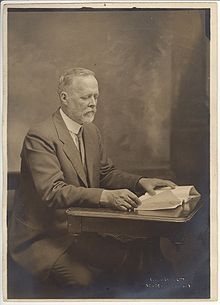
Scott co-founded the Center for Vector-Borne Research (CVEC), comprised of researchers throughout the UC System; directed the UC Davis Arbovirus Research Unit; and served as vice chair of the UC Davis Entomology Department.
He is a fellow of the Entomological Society of America (ESA) and a member since 1983. He chaired the ESA's Section on Medical and Veterinary Entomology; and served on the American Committee for Entomology and the American Committee on Arthropod-Borne Viruses in the American Society for Tropical Medicine and Hygiene. He organized the Medical and Veterinary Entomology section of the XXI International Congress of Entomology in Iguassu, Brazil.
Highly regarded by his peers and associates, Scott is also a fellow of the American Association for the Advancement of Science, and the American Society of Tropical Medicine and Hygiene, as well as ESA. He served as a National Research Council Associate in Bangkok, Thailand; is a past president of the Society for Vector Ecology; and chairs the Mosquito Modeling Group in the program on Research and Policy in Infectious Disease Dynamics (modelers and vector-borne disease specialists who report to the Science and Technology Directorate, Department of Homeland Security, and the Fogarty International Center, National Institutes of Health).
The UC Davis medical entomologist chairs activities on vector control for the Partnership for Dengue Control, serves on several committees for the World Health Organization, and is an editor for the American Journal of Tropical Medicine and Hygiene, Journal of Insect Science, and Transactions of the Royal Society of Tropical Medicine and Hygiene.
Scott is known for his expertise and enthusiasm in drawing undergraduate and graduate students, postdoctoral associates and researchers to his world-class lab, said project scientist Amy Morrison of the Scott lab's Iquitos Project, Peru. “He has a special ability to push, persuade, and coax me to transform a good idea into a methodological and operational reality, and he has recognized my abilities and value in this regard. He has had an enduring and significant impact on our understanding of dengue and Aedes aegypti ecology.”
In addition to his major accomplishments, “part of Dr. Scott's legacy,” she said, “is bringing together multidisciplinary teams to understand transmission of arboviral diseases and to use that information to shift and shape disease control strategies.”
Scott's world-class research lab received nearly $10 million in grants in 2014 to study dengue. He is the principal investigator of the multi-year grants: $7.5 million from the National Institutes of Health and $2.2 million from Notre Dame University.
Dengue drew international attention in 2013 when Scott and colleagues published research indicating that dengue is three times more prevalent than originally thought--more than triple WHO's estimate of 50 to 100 million. The researchers assembled known records of dengue occurrence worldwide and used a formal modelling framework to map the global distribution of dengue risk. They then paired the resulting risk map with detailed longitudinal information from dengue cohort studies and population surfaces to infer the public health burden of dengue in 2010.
The list of UC Davis-affiliated scientists who have received the C. W. Woodworth Award:
2015: Thomas W. Scott
2014: James R. Carey
2011: Frank Zalom
2010: Walter Leal
2009: Charles Summers
1999: Harry Kaya
1991: Thomas Leigh
1987: Robert Washino
1981: Harry H. Laidlaw Jr.
1978: William Harry Lange
The Woodworth Award, first presented in 1969, recognizes a PBSA member for outstanding accomplishments in entomology. The award memorializes noted entomologist Charles W. Woodworth (1865-1940), who founded the UC Berkeley Department of Entomology and participated in the development of the Agricultural Experiment Station at UC Davis, and as such, he is considered the founder of the UC Davis entomology department. Woodworth made numerous valuable contributions to entomology during his career. Among his publications, he is especially known for A List of the Insects of California (1903), The Wing Veins of Insects (1906), Guide to California Insects (1913),and "School of Fumigation" (1915). He was the first editor and first contributor to the University of California's publications in entomology.
Advocating the responsible use of pesticides, Woodworth proposed and drafted the first California Insecticide Law in 1906. He was an authority on the eradication of the codling moth, peach twig-borer, citrus insects, grasshoppers and citrus white fly. Woodworth received both his bachelor's degree (1885) and a master's degree (1886) from the University of Illinois at Urbana-Champaign.
The Pacific Branch of ESA encompasses 11 U.S. states (Alaska, Arizona, California, Hawaii, Idaho, Montana, Nevada, Oregon, Utah, Washington and Wyoming); several U.S. territories, including American Samoa, Guam and the Northern Mariana Islands; and parts of Canada and Mexico.
Related Links:
Thomas Scott Named Distinguished Professor
Thomas Scott Lab Receives Two Major Grants for Dengue Research
List of C. W. Woodworth Recipients
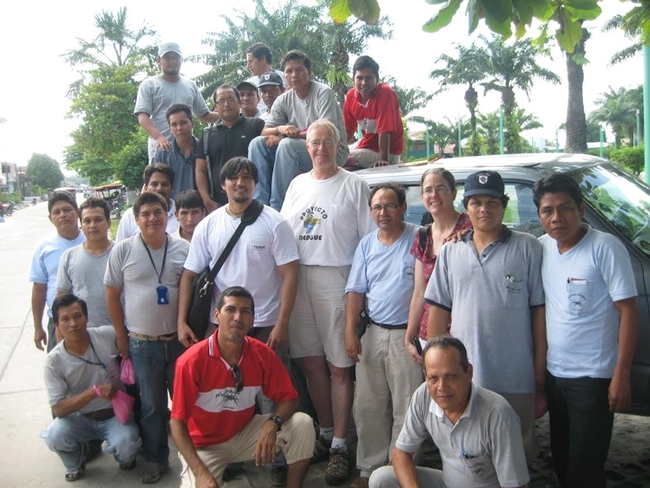

- Author: Kathy Keatley Garvey
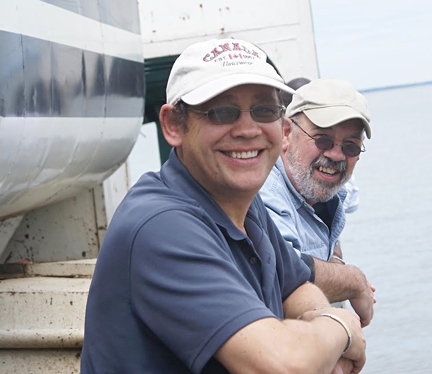
The yellow fever mosquito, Aedes aegypti, a newly invasive species in central California? Check.
The West Nile virus mosquito, Culex quinquefasciatus, found throughout much of the world? Check.
The malaria mosquito, Anopheles gambiae, which wreaks worldwide havoc? Check.
Cornel's name appeared in the news this week when the UC Davis lab of Walter Leal announced that it had found the odorant receptor that repels DEET in the southern house mosquito, Culex quinquefasciatus mosquito. Cornel provided the mosquitoes that allowed the Leal lab to duplicate his colony. Proceedings of the National Academy of Sciences (PNAS) published the work Oct. 27.
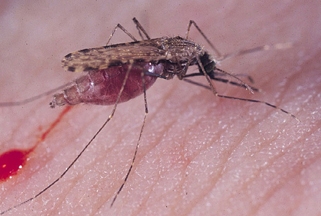
Cornel's main research keys in on the population genetics and ecology of West Nile virus vectors in the United States and population genetics and ecology of major malaria vectors in Africa.
“Anton is a great asset to our program, a wonderful colleague, and a nice team player,” said Leal, a professor in the Department of Molecular and Cellular Biology. “We benefit greatly from his generosity by sharing not only mosquito colonies, but also his encyclopedic knowledge on mosquito biology and ecology. We shared co-authorship in a number of publications, and many more are coming.”
Cornel collaborates with Leal on oviposition attraction in Culex quinquefasciatus and “we are now endeavoring to come up with effective oviposition attractive chemical lures to use in virus surveillance and kill traps.”
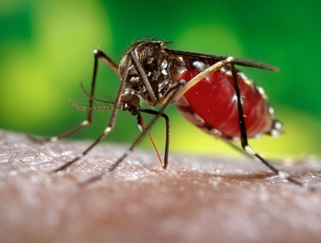
“The invasion of Aedes aegypti into central California has been of great concern especially as current control methods do not appear to be working very well,” said Cornel, who works closely with state's mosquito abatement personnel. “We have found that the Aedes aegypti have insecticide resistance genes which likely explains why their ultra-low volume (ULV) and barrier spray applications have not worked as well as expected. Work will be ongoing next year when the Aedes aegypti become active again after a brief slow overwintering period from November to March.”
A native of South Africa, Cornel received his doctorate in entomology, focusing on mosquito systematics, in 1993 from the University of the Witwatersrand, Johannesburg. He completed a post-doctoral fellowship with the Entomology Branch of the Centers for Disease Control and Prevention, Atlanta, before joining UC Davis in 1997 as an assistant professor and researcher.
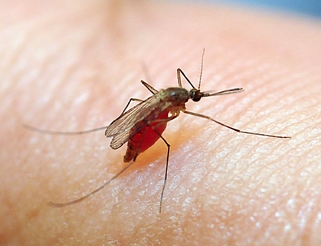
“Who would have thought that that the expertise that I gained on West Nile virus as a master student in South Africa would be used many years later after West Nile virus invaded and spread throughout the USA?”
For more than two decades, Cornel has teamed with fellow medical entomologist and “blood brother” Professor Gregory Lanzaro of the UC Davis School of Veterinary Medicine to study malaria mosquitoes in the West African country of Mali. Their work is starting to show significant results.
“Because of our commitment to conduct long term longitudinal studies and not static investigations,” Cornel said, “we have now shown that considerable selective processes are taking place causing spatiotemporal dynamics of gene flow and fitness events in major malaria vectors M (now Anopheles coluzzii) and S (now Anopheles gambiae) and M/S hybrids in West Africa.” Their work was published in PNAS in 2013 (vol:110:49).
“We are currently establishing further evidence of the important role of insecticide resistance traits in spatiotemporal dynamics of Anopheles coluzzii, Anopheles gambiae and the Bamako form.” Cornel noted that these results have “considerably important implications in future efficacies of insecticide treated bednets to control indoor biting malaria vectors in West Africa.”
Cornel also teams with Lanzaro and Professor Heather Ferguson of the University of Glasgow to examine the ecology and associated genetics of the major malaria vector Anopheles arabiensis in Tanzania. They began working on the project four years ago.
“We are looking at the effects of bednet use and changes in feeding patterns of this mosquito taking population structure into consideration,” Cornel said. He and his colleagues published a paper in November 2013 in G3: Genes, Genome and Genetics, titled “Diversity, Differentiation, and Linkage Disequilibrium: Prospects for Association Mapping in the Malaria Vector Anopheles arabiensis."
One of his newest projects is the study of population/genetics, insecticide resistance and cytogenetics in the major malaria vector in Brazil. Cornel and Lanzaro launched their study in September when they traveled to Brazil to begin targeting the culprit, Anopheles darlingi, a “widely distributed species that has adapted to survive in multiple ecological zones and we suspect that it may consist of multiple incipient or closely related species,” Cornel said.
“While in Brazil I collected larvae and dissected salivary glands from them to examine their polytene chromosome inversion structure and polymorphisms,” Cornel related. “Inversions are vitally important to consider in genetic analyses and it takes considerable patience to interpret the chromosomes.”
Cornel and Lanzaro collaborate with Professor Paulo Pimenta of the Laboratory of Medical Entomology, René Rachou Research Centre- FIOCRUZ, Belo Horizonte, Minas Gerais, Brazil. The UC Davis medical entomologists hope to produce good preliminary data from their research trip to write grants and establish a long-term project in Brazil.
Cornel also studies avian malaria. That interest sparked four years ago when he began working in Cameroon with scientists from UCLA and San Francisco State University (SFSU), including SFSU's Ravinger Sehgal, who studies avian blood parasites. Cornel's graduate student Jenny Carlson, in her final year of her Ph.D studies, is investigating avian malaria in Fresno County.
The Cornel-Carlson research implicates that considerable fidelity exists between Culex mosquito species and species of plasmodium they transmit. “This is contrary to the currently held belief that all Culex mosquitoes are equally capable of transmitting avian malaria,” Cornel said. “In our investigations, we described a new species of avian malaria which is very common in songbirds in Fresno County (published in Parasitology Research).”
Cornel plans to continue working with Sehgal investigating the effects of deforestation on transmission of avian parasites in Cameroon. They recently submitted a National Science Foundation grant proposal. “A large swath of primary forest is slated to be deforested in Cameroon and replaced with Palm oil plantations and we will investigate the effects of this hopefully, as it happens.”
Cornel will be starting a new mosquito-borne virus project in February. He received a Carnegie Foundation scholarly three-month fellowship to work in South Africa (February through to April). The primary objective of the project? To examine mosquito-borne viruses cycling in seven national parks in South Africa and two National Parks in Bostwana.
“It's extremely difficult to get permission to conduct field research in national parks in Southern Africa and this provides an unprecedented exciting opportunity for me to work with a friend, Professor Leo Braack from the University of Pretoria, in these parks. One has to be very careful working in some of these parks at night because of the wild predators, elephants, hippos and buffalo.”
Cornel is active in the 30- member Center for Vectorborne Diseases (CVEC), headquartered in the UC Davis School of Veterinary Medicine and considered the most comprehensive vectorborne disease program in California. Both interdisciplinary and global, CVEC encompasses biological, medical, veterinary and social sciences. Globally, the major emphasis is on research and education involving diseases such as malaria, dengue and leishmaniasis in the developing world. CVEC members study molecular biology, virology, parasitology, vector control, and epidemiology of vectorborne diseases. In addition, the center serves as the principal teaching resource for undergraduate and graduate courses in all facets of vector-borne disease sciences.
Related Links:
Proceedings of the National Academy of Sciences (research paper, PDF)
Research from Walter Leal Lab on DEET
Close Connections (Like Father, Like Son)
